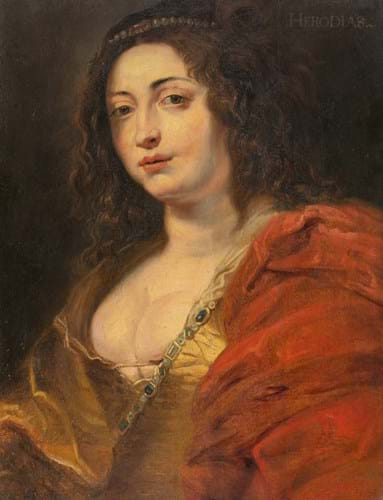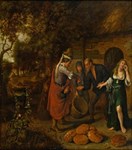According to the Gospels, Herodias, the mother of Salome, played a major part in the plot to execute John the Baptist. She supposedly persuaded her daughter to ask King Herod for John’s head on a platter as a reward for her entrancing dance.
Herodias has often been the subject of Old Master paintings, one of which was sold by Karl & Faber (27% buyer’s premium) on November 17 in Munich.
For many decades, the 2ft 1in x 19in (64 x 49cm) wood panel was considered to be a work by Rubens.
Its 20th century provenance can be traced back to 1932, when it was sold at an auction in Frankfurt; it was bought by a local dealer who later sold it to Mary Heilmann- Stuck, the daughter of the German artist Franz von Stuck, and her husband Albert Heilmann.
During the Second World War, along with many hundreds of other works of art from Bavarian museums and collections, Herodias was stored in a monastery near the Alps, far away from the military action.
After the war, the painting was returned to Heilmann-Stuck and her husband via the Central Collecting Point in Munich which was established by the American military authorities to give works of art back to their legitimate owners. The painting was passed on to their son and on his death it came into possession of the vendor in Munich.
Since the 1980s, the attribution to Rubens is no longer considered valid; according to current research, Herodias is the work of Rubens’ pupil Erasmus Quellinus II.
He copied numerous works by his master - in this case, taking inspiration from a larger painting, namely Herodias and Salome with the Head of Saint John the Baptist from c.1624.
Original lost
The Rubens original is lost, but several copies by his studio have survived, including one in Castle Howard, Yorkshire. The motif was also executed as a copperplate engraving by Schelte a Bolswert, who worked closely with the painter.
Quellinius confined his composition to the central figure of Herodias. His work can be dated to between 1635-40 and bears the name of the subject on the top right-hand corner.
Estimated at €20,000, the painting went on to sell for €75,000 (£65,220).















